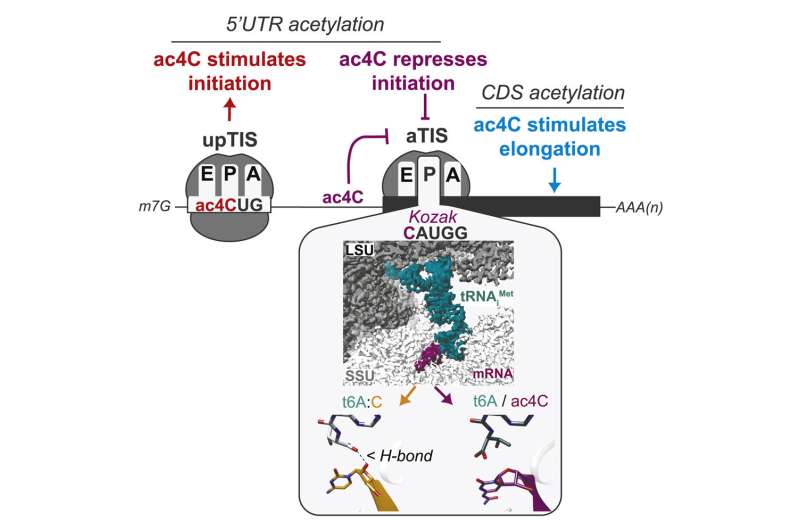Dual function found for mRNA modifier

A chemical modification of messenger RNA (mRNA) performs different functions depending on its location, according to a study published in the journal Molecular Cell.
This modification is produced by NAT10, an enzyme overexpressed in some cancers, so understanding how it modifies protein expression could lead to breakthroughs in the future, according to Daniel Arango, Ph.D., assistant professor of Pharmacology and lead author of the study.
"We don't yet know if the role of the enzyme in promoting cancer growth is directly related to its mRNA modification, but that's a future question of ours," Arango said.
Genetic information is converted from genes into proteins with the help of mRNA, and chemical modifications of RNA are a major regulator of this process. These modifications can change the fate of an mRNA, according to Arango.
"I think of it like an alphabet—the letters are static, but you can combine those letters into words and modify those words with accents," Arango said. "These modifications are genomic accents: they change the meaning of the genomic alphabet."
Regions of mRNA encode for proteins alongside non-coding regions that have regulatory function. Most of these modifications operate by methylation but one modification works through acetylation: cytidine acetylation (ac4C). In the current study, investigators used genetically modified cells to study how the ac4C modification impacts gene expression.
The scientists found that the specific position of ac4C was important; ac4C in the coding region promotes more efficient translation, contributing to eventual upregulation of the protein that's being expressed. On the other hand, if ac4C is in the non-coding region—specifically, near an mRNA translation initiation site—it interferes with recognition of those sites, and decreases translation and subsequent protein expression.
Increased expression of the enzyme NAT10 is associated with some cancers such as acute myeloid leukemia and hepatocellular carcinoma. The dual function of ac4C could be related, but more investigation is required, according to Arango.
"How this duality is implicated in rampant cell proliferation is unknown, but this is something we will study in the future," Arango said. "This could also potentially be harnessed to manipulate protein production in biotechnology or clinical settings."
More information: Daniel Arango et al, Direct epitranscriptomic regulation of mammalian translation initiation through N4-acetylcytidine, Molecular Cell (2022). DOI: 10.1016/j.molcel.2022.05.016
Journal information: Molecular Cell
Provided by Northwestern University





















